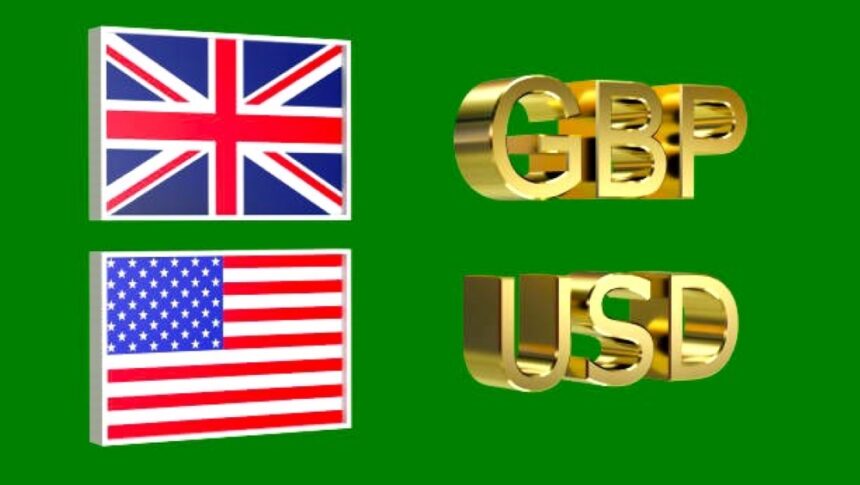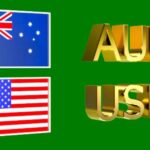Pound Sterling Slides as UK Flash PMI Contracts in April: Market Eyes Retail Sales and BoE Policy Shift.
The British Pound (GBP) faced a broad sell-off on Wednesday after the release of disappointing preliminary UK PMI data for April, signaling unexpected weakness in the economy’s key sectors. With investors digesting signs of contraction across services and manufacturing, expectations of a near-term rate cut by the Bank of England (BoE) are gaining traction. Meanwhile, markets are keeping a close eye on upcoming US PMI data and ongoing geopolitical developments, particularly surrounding US-China trade dynamics and Trump’s evolving stance on monetary policy.
UK Business Activity Slumps: Composite PMI Falls Below 50
The S&P Global/CIPS UK Composite PMI for April fell sharply to 48.2, a decisive move into contraction territory and well below both the market consensus of 50.4 and March’s reading of 51.5. This marks the first contraction in UK business activity since October 2023, raising red flags about the economic momentum heading into the second quarter.
The Services PMI, often considered the backbone of the UK economy, plunged to 48.9 from March’s 52.5 and missed the expected 51.3, signaling widespread weakness in domestic demand and global uncertainty weighing on consumer-facing sectors. Meanwhile, the Manufacturing PMI sank further to 44.0, matching expectations but lower than the previous reading of 44.9.
Confidence at 2.5-Year Low
Perhaps more worrying than the headline figures is the deepening pessimism in business sentiment. According to the report, overall business confidence is now at its lowest level since late 2022, driven by concerns about domestic recession risks, geopolitical instability, and prolonged global trade tensions. Many firms cited the deteriorating outlook on US trade policy and uncertainty regarding global interest rate trends as factors contributing to subdued forecasts.
Pound Underperforms: Flash PMI Fuels Market Speculation of BoE Rate Cut
The weak PMI numbers immediately triggered a bearish reaction in Pound Sterling, which underperformed against major peers, including the Euro and the US Dollar. The Pound initially fell but pared losses during European trading hours, stabilizing around 1.3300 as the US Dollar also lost some earlier strength.
With the UK economy showing signs of stalling, traders are growing increasingly confident that the BoE will act at its next policy meeting in May. March CPI data, released earlier, showed a slower-than-expected inflation rise, further justifying potential monetary policy easing.
Cooling Wage Growth Supports Policy Shift
Adding to the dovish expectations, wage growth in the UK continues to slow. New data from HR analytics firm Brightmine revealed that pay awards rose by just 3% for the fourth consecutive rolling quarter—the slowest pace since December 2021. Slower wage growth eases pressure on the BoE to maintain a hawkish stance, allowing more room for accommodative measures to support economic activity.
UK Retail Sales Eyed Next: March Data Could Reinforce Downbeat Outlook
The next key data release on the UK economic calendar is the March Retail Sales report, scheduled for Friday. Markets anticipate a 0.4% month-on-month decline, reversing the 1% rise seen in February. A negative reading here would further confirm weakness in consumer sentiment and could solidify expectations of a BoE rate cut.
Retail sales serve as a critical barometer for consumer-driven growth, and sustained weakness would paint a troubling picture for the economy already reeling from falling PMI numbers.
US Dollar Flat Despite Trade Optimism and Trump Comments
Across the Atlantic, the US Dollar Index (DXY) slipped back toward the 99.00 mark after early-session gains. Despite broadly optimistic comments from President Donald Trump about progress in trade talks and revenue gains from tariffs, markets remain jittery amid lingering doubts about Federal Reserve independence.
President Trump expressed confidence on Tuesday that bilateral trade deals with multiple countries are close to completion. He also noted progress in ongoing discussions with China, adding that while tariffs wouldn’t drop to zero, they would also not reach the punitive 145% previously feared.
However, Trump’s repeated criticisms of Fed Chair Jerome Powell—despite insisting he does not plan to fire him—have unsettled markets. Concerns over Fed independence are contributing to a shift in risk appetite, with the USD losing ground as investors reevaluate its traditional safe-haven role.
US PMI Data Awaited: Investors Look for Confirmation of Growth Momentum
Investors are now awaiting the release of US S&P Global Flash PMI data for April, which could offer crucial insight into the trajectory of the world’s largest economy. Should the data point toward a slowdown, it may trigger a reassessment of the Fed’s policy path and put further pressure on the US Dollar.
The market reaction will also depend on how the US PMI figures compare to global counterparts, particularly in Europe and Asia, where growth remains uneven. A stronger-than-expected PMI print could revive USD strength and limit GBP/USD upside potential.
Market Summary: Key Movers and Takeaways
Pound initially dropped but recovered to 1.3300 as the USD gave up gains.
UK Composite PMI sank to 48.2, indicating contraction for the first time in six months.
Services PMI fell to 48.9, significantly below expectations.
Manufacturing PMI dropped to 44.0, continuing its contraction trend.
Business confidence hit a 2.5-year low, highlighting recession risks.
BoE rate cut expectations strengthen amid weak growth, CPI, and wage data.
UK Retail Sales data expected to show 0.4% MoM decline in March.
Trump expressed optimism on trade deals, and downplayed fears of firing Powell.
US Dollar Index fell back to 99.00, with investor focus turning to US flash PMIs.
Conclusion: Pound Faces Pressure as Economic Headwinds Grow
The Pound Sterling’s reaction to April’s flash PMI figures highlights growing concern among investors that the UK economy could be entering a fragile phase. With weakening business sentiment, slowing wage growth, and a likely dip in retail sales, the narrative for a Bank of England rate cut is gaining traction.
While short-term recoveries in GBP/USD are possible on temporary USD weakness, the broader trend suggests Sterling may remain under pressure unless upcoming data points, including Friday’s Retail Sales, surprise to the upside. For now, markets remain firmly focused on macro fundamentals and central bank policies, with geopolitical developments adding a layer of uncertainty.







